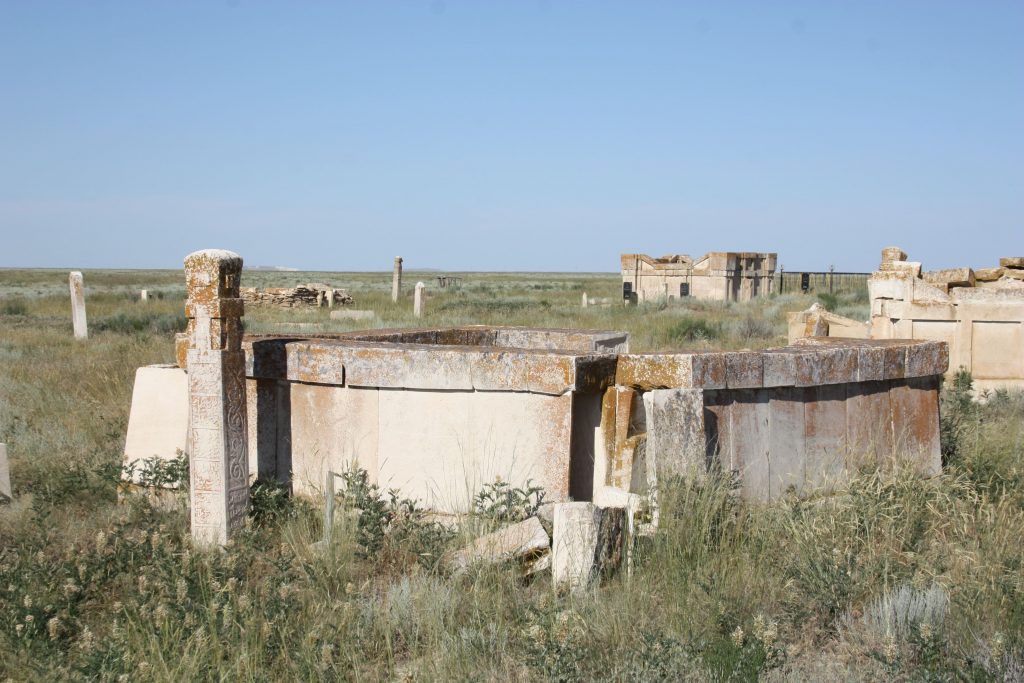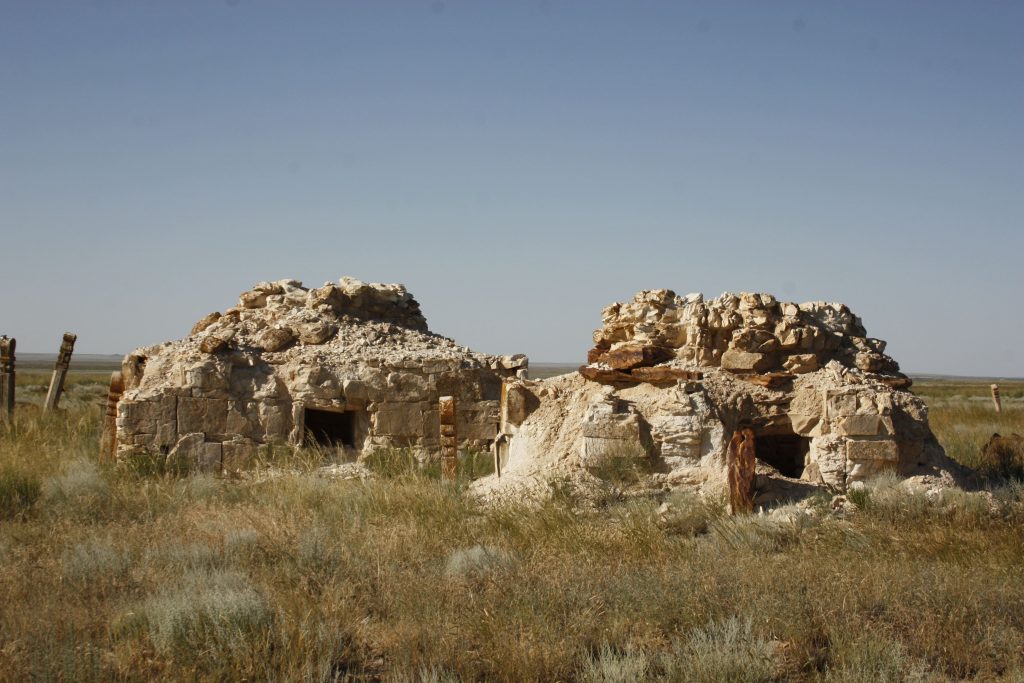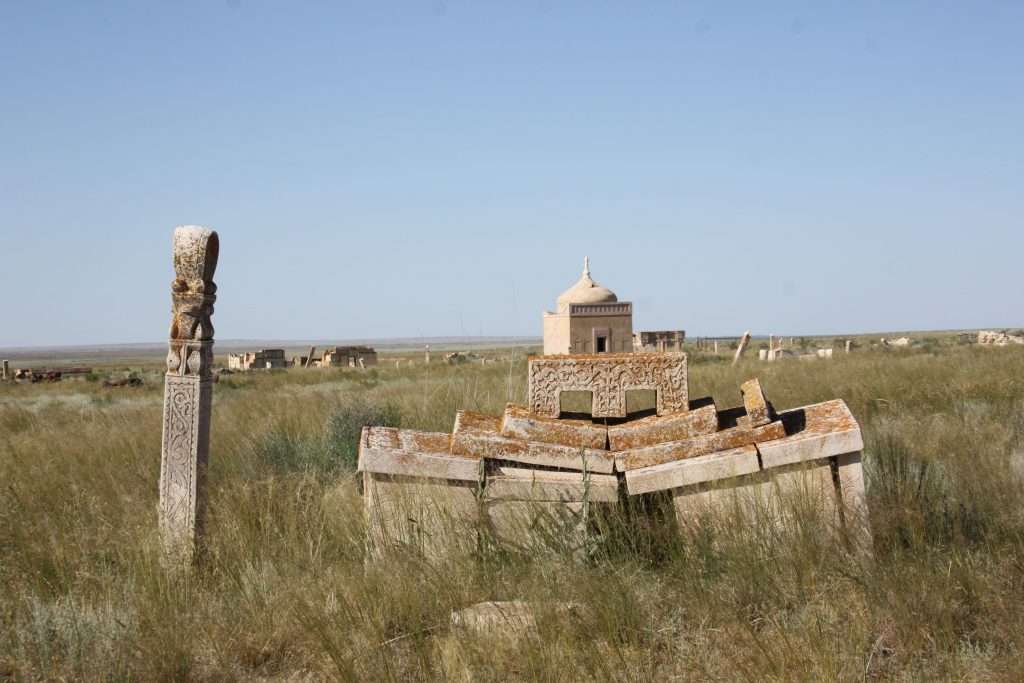Object name and date: Karasakal necropolis of the 17th century. – early. XX century.
Location: Aktobe region, Bayganisky district, 60 km south-west of the village. Zharkamys.
Description: the monument is a huge necropolis with an area of more than 15 hectares, on which there are at least 1,0 thousand tombstones, many of which have survived only in traces.
The most ancient part of the necropolis is evidently the north-western end of the complex, where the grave of St. Karasakal is located. Around this monument there are badly destroyed fences made of mud bricks and limestone. The entire northeastern part of the necropolis is made up of 19th century tombstones made of sandstone limestone. The central part of the complex is poorly saturated with gravestones. In the southern part of the necropolis there are structures made, as a rule, of limestone. Despite the fact that there is no particular sequence in the planning of the complex, at the same time, two main parts of the necropolis can be distinguished: the southwestern, more archaic, and northeastern, belonging to the middle. XІX – early. XX centuries
The most significant monument of the Karasakal necropolis is object No. 50, the Indibay mausoleum, made of sawn limestone blocks. Its composition consists of a rectangular frame and a helmet-shaped dome. The decor is flat-relief on the outside, in the interior there is a contour with painting ornament. Saganatams made of limestone-sandstone blocks make up a significant group of structures. It is characteristic that the necropolis is an outstanding burial and cult complex of Western Kazakhstan, on which the main types of grave structures of the Kazakhs of the 17th century are concentrated. – early. XX century. river valleys Zhem (Embas), allowing in general terms to trace their genesis from simple forms to more complex volumetric geometric with a variety of decor. The epigraphy of the necropolis is of great historical and ethnographic significance.





